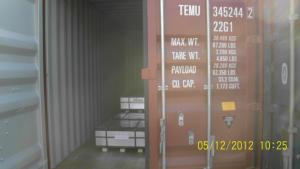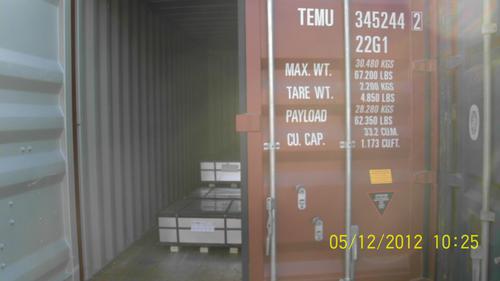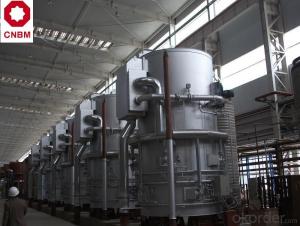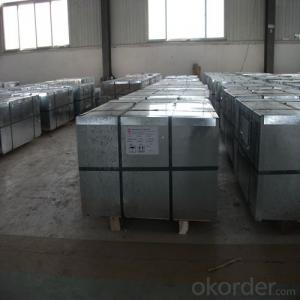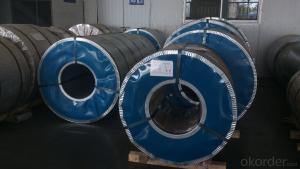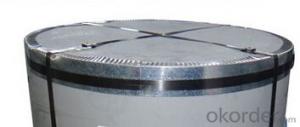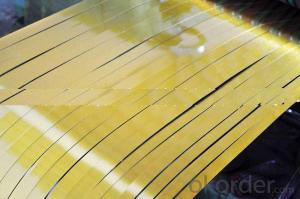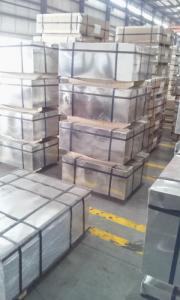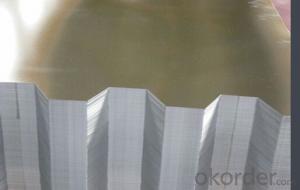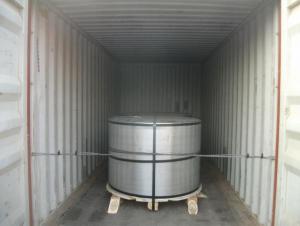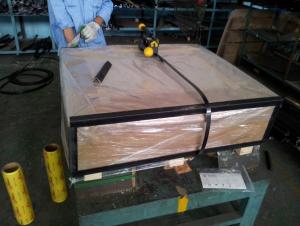Tinplate Sheet
- Loading Port:
- China Main Port
- Payment Terms:
- TT OR LC
- Min Order Qty:
- -
- Supply Capability:
- -
OKorder Service Pledge
OKorder Financial Service
You Might Also Like
Tinplate is a thin steel sheet coated by tin. It has an extremely beautiful metallic luster as well as excellent properties in corrosion resistance, solder ability, and weld ability.
Tinplate is widely used for making all types of containers such as food cans, beverage cans, and artistic cans, tea cans, painting cans, chemical package cans and dry food package cans, metal printing etc. Its applications are not limited to containers; recently, tinplate has also been used for making electrical machinery parts and many other products.
Our Tinplates Specification:
Standard: ISO 11949 -1995, GB/T2520-2000,JIS G3303,ASTM A623, BS EN 10202
Material: MR,SPCC
Thickness:0.15mm - 0.50mm
Width: 600mm -1150mm
Temper: T1-T5
Annealing: BA & CA
Coil Inner Diameter: 508mm
Weight: 6-10 tons/coil 1~1.7 tons/sheets bundle
Passivation:311
Oil: DOS
Surface: Finish,bright,stone,matte,silver
Packing:
1、For sheets: plastic or waterproof paper, metallic cover and angles, steel strips,wooden pallet.
2、For Coils: plastic or waterproof paper,plastic protect plate,steel strips.
Both Prime and Second Quality Are Available!!!
- Q: What are the advantages of using tinplate for paint cans?
- There are several advantages of using tinplate for paint cans. Firstly, tinplate is highly resistant to corrosion, ensuring that the paint cans remain durable and do not rust over time. Secondly, tinplate has excellent sealing properties, preventing any leakage or evaporation of the paint. Additionally, tinplate is lightweight and easy to handle, making it convenient for transportation and storage. Lastly, tinplate is a sustainable choice as it is recyclable, contributing to environmental conservation efforts.
- Q: How is tinplate used in the construction industry?
- Tinplate is commonly used in the construction industry for various applications. Its corrosion-resistant properties make it an ideal material for roofing and cladding systems, where it provides durability and protection against weather elements. Additionally, tinplate is used in the manufacturing of HVAC ductwork, gutters, and downspouts due to its strength and ability to withstand harsh environmental conditions. The versatility and ease of fabrication of tinplate make it a preferred choice for construction projects.
- Q: Can tinplate be used for aerospace applications?
- Yes, tinplate can be used for certain aerospace applications. It is often used for cosmetic purposes in aerospace components such as decorative trim or coating on interior surfaces. However, it is not typically used for structural or critical parts due to its relatively low strength and potential for corrosion.
- Q: Can tinplate packaging be used for kitchen utensils?
- Yes, tinplate packaging can be used for kitchen utensils. Tinplate is a durable and food-safe material that can be easily shaped into various utensils like cans, containers, or other kitchen tools. It provides a protective barrier against rust and corrosion, making it suitable for kitchen use.
- Q: What are the main applications of tinplate in the aerospace industry?
- Tinplate is primarily used in the aerospace industry for manufacturing various components, such as fuel tanks, containers, and protective casings. Its corrosion resistance properties make it ideal for safeguarding against moisture and ensuring the longevity of these critical aerospace components. Additionally, tinplate's lightweight nature contributes to the overall weight reduction of aircraft, enhancing fuel efficiency and performance.
- Q: What are the different forms and shapes tinplate can be manufactured into?
- Tinplate can be manufactured into various forms and shapes, including cans, containers, boxes, trays, and even decorative items. Its malleability allows for complex designs, making it suitable for a wide range of applications in the packaging industry.
- Q: What are the different ways to seal tinplate cans?
- There are several methods commonly used to seal tinplate cans. These include double seam closure, soldering, adhesive bonding, and welding. Double seam closure is the most widely used method, where the can's lid and body are mechanically interlocked and sealed using pressure and rollers. Soldering involves melting a metal alloy to create a tight seal between the lid and body. Adhesive bonding uses specialized adhesives to bond the lid and body together. Welding involves fusing the lid and body using high heat to create a strong and permanent seal.
- Q: What are the safety considerations when handling tinplate?
- When handling tinplate, it is essential to consider several safety measures. First, tinplate can have sharp edges, so wearing gloves and using appropriate tools is important to avoid cuts or injuries. Secondly, tinplate is often coated with various substances, such as lacquer or resin, which may contain harmful chemicals. Therefore, it is crucial to handle tinplate in well-ventilated areas and wear protective equipment like goggles and masks to minimize exposure. Additionally, tinplate can be heavy and bulky, so proper lifting techniques should be employed to prevent strains or back injuries. Lastly, storing tinplate in a dry and clean area can help prevent corrosion and maintain its structural integrity.
- Q: What are the common safety features for tinplate packaging?
- Some common safety features for tinplate packaging include tamper-evident seals, child-resistant closures, and durable construction to prevent breakage or leakage. Additionally, many tinplate packaging products are also made with food-grade materials to ensure the safety of the contents.
- Q: What are the safety regulations for using tinplate in food packaging?
- The safety regulations for using tinplate in food packaging typically involve compliance with government standards such as the Food and Drug Administration (FDA) in the United States or the European Food Safety Authority (EFSA) in Europe. These regulations include guidelines on the composition and quality of tinplate coatings, prevention of migration of harmful substances into food, and adherence to good manufacturing practices to ensure the safety of the packaging material.
Send your message to us
Tinplate Sheet
- Loading Port:
- China Main Port
- Payment Terms:
- TT OR LC
- Min Order Qty:
- -
- Supply Capability:
- -
OKorder Service Pledge
OKorder Financial Service
Similar products
Hot products
Hot Searches
Related keywords
